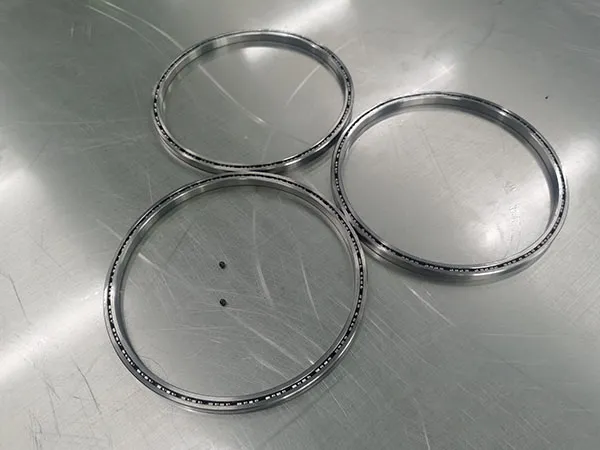Thin section bearings, characterized by their small and constant cross-section regardless of bore diameter, are designed for applications where space and weight are critical. Within this category, a key distinction lies between sealed and open bearings, primarily concerning their protection against the environment and lubrication management.
Differences Between Sealed and Open Thin Section Bearings

1. Protection from Contaminants:
Sealed Thin Section Bearings: These bearings have integrated seals (typically made of rubber or other elastomeric materials) that create a barrier, preventing dirt, dust, moisture, and other contaminants from entering the bearing’s internal components.
Advantages:
Excellent Contamination Prevention: Ideal for harsh, dirty, or wet environments.
Extended Bearing Life: By keeping contaminants out, wear and damage are significantly reduced.
Reduced Maintenance: Often “lubricated for life” and do not require re-lubrication, leading to lower maintenance costs and less downtime.
Lubricant Retention: The seals effectively retain the internal lubricant (usually grease), ensuring consistent lubrication and preventing degradation.
Disadvantages:
Higher Friction: The contact between the seals and the rotating components can generate more friction, potentially leading to slightly higher operating temperatures and limiting maximum speeds.
Higher Initial Cost: The manufacturing process for integrating seals adds to the initial cost.
Limited Accessibility for Inspection/Maintenance: The seals make it difficult to access the internal components for inspection or troubleshooting. If the internal lubricant degrades, the bearing typically needs to be replaced rather than re-lubricated.
Potential for Seal Failure: Seals can wear and degrade over time, especially in demanding conditions, leading to potential contamination ingress if they fail.
Open Thin Section Bearings: These bearings do not have seals or shields, leaving their internal components exposed to the environment. They are typically used where the bearing is immersed in a lubricating fluid or in very clean, controlled environments.
…
For more detailed information about the differences between sealed thin-walled bearings and open thin-walled bearings, please click here:https://www.lynicebearings.com/a/blog/differences-between-sealed-and-open-thin-section-bearings.html


